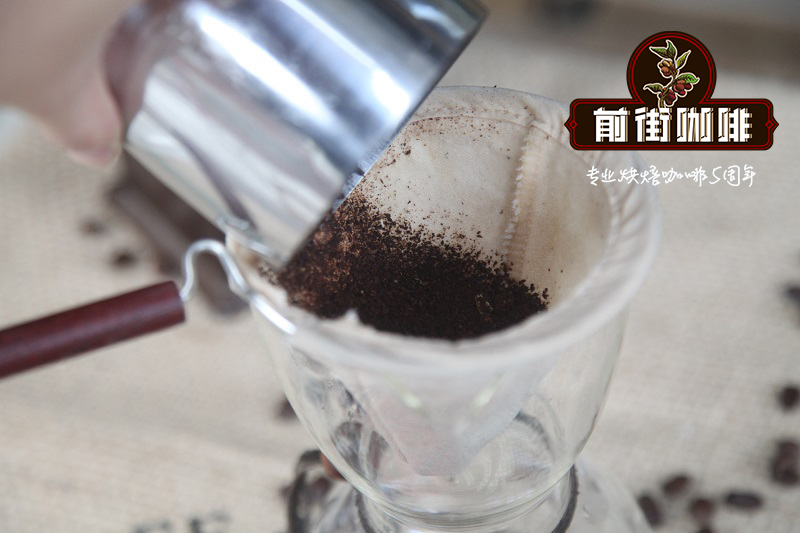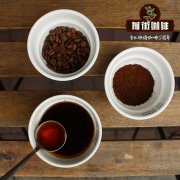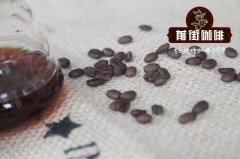What is the red wine treatment in coffee? is red wine added to the coffee wine treatment?

Professional coffee knowledge exchange more coffee bean information please follow the coffee workshop (Wechat official account cafe_style)
Can you think of the relationship between coffee and red wine? I'm sure you've heard of the traditional coffee making process, but how much do you know about coffee processed with red wine?
2015 WBC contestant Sasa brought to the world a Colombian coffee bean that has gone through a similar wine-making process. In addition to the novel taste of beans, the "red wine treatment" that was adopted to treat beans also made editors as curious as many coffee lovers. What on earth is the so-called "red wine treatment"?
Even though the details of red wine treatment are not known, the editor roughly summarizes the process description of "red wine treatment" by combining the consultation mentioned above and his own understanding of the wine fermentation process.
The red wine treatment of coffee beans, also known as red wine treatment, is inspired by the brewing technology of red wine. At present, only eight estates in Colombia have successfully introduced coffee beans treated with this method to the market. According to the data of these eight estates, we can roughly divide the types of red wine treatment into: acetic acid fermentation (Aerobic aerobic fermentation), lactic acid fermentation (Anaerobuic anaerobic fermentation), mixed fermentation (Mix Fermentation=Aerobic+Anaerobuic).
The traditional treatment method is difficult to control the changeable fermentation degree of coffee beans. But red wine treatment rules can ensure the quality of coffee beans by controlling PH value, even temperature and humidity, and airtight fermentation makes aroma less volatile.
Next, let's talk about the specific process of fermentation. First of all, Colombian farmers carefully pick coffee cherries and carefully select coffee red fruits to ensure that among the coffee cherries selected for processing, the percentage of immature cherries is less than 2%, defective beans less than 3%, and floating beans less than 5%.
The selected coffee cherries are placed in a specific container by the farmer's uncle (the beans used in the Australian barista Sasa competition are placed in a metal container). But in any case, the container should have a device similar to a red wine fermentation suppository or a single exhaust valve. In this way, carbon dioxide can be spilled through the device to control the concentration of air in the container. At this time, the coffee cherries in the container are fermented with acetic acid, and the beans are relatively bright, clean and citric acid.
According to Sasa's description in the competition, the processor injected carbon dioxide into the container to prevent oxidation from producing volatile acid, a process known as lactic acid fermentation, which produces malic acid and stone acid, which is relatively stable, so the beans fermented with lactic acid have a more mellow acidity, with cheese, nutty and creamy flavor.
Their characteristics are as follows
⊙ aerobic fermentation = acetic acid fermentation (AEROBIC)
Taste features: cleaner acidity, bright and lively, citric acid citric acid.
⊙ anaerobic fermentation = lactic acid fermentation (ANAEROBUIC)
Taste features: round alcohol high thickness, relatively low cleanliness, malic acid tartaric acid.
⊙ mixed fermentation = (MIX FERMENTATION= AEROBIC+ ANAEROBUIC)
Taste characteristics: medium thickness, smooth, acidity, amino acid nut cream.
Summary of the treatment methods of raw coffee beans
All the ways of handling raw coffee beans are based on providing consumers with a richer and varied taste of coffee.
They are divided into the following three categories:
One: different substances involved in fermentation (pericarp, pulp and pectin fungi)
Second, the environment involved in fermentation is different (PH value has water, no water, oxygen and oxygen)
Third: participate in the drying process is different (natural light sun drying equipment turn over container material)
By taking advantage of the sunlight in nature. water. Wind and other raw beans in combination with coffee retain more aromatic substances of coffee.
END
Important Notice :
前街咖啡 FrontStreet Coffee has moved to new addredd:
FrontStreet Coffee Address: 315,Donghua East Road,GuangZhou
Tel:020 38364473
- Prev

How to find the gold extraction ratio of each bean?
Professional coffee knowledge exchange more coffee bean information Please follow the coffee workshop (Wechat official account cafe_style) Gold extraction ratio, refers to the perfect balance of soluble matter and water in coffee, extract a perfect cup of coffee. One of the biggest obstacles we hear when talking to each other about the extraction of coffee is what is the correct ratio of coffee to water. Come on!
- Next

What kind of coffee can be processed in animals? introduction to strange coffee treatment.
Professional coffee knowledge exchange more coffee bean information please follow the coffee workshop (Wechat official account cafe_style) if the coffee processed in the body, everyone's first reaction should be Kopi Luwak! That is, civet coffee ~ biological treatment, also known as animal in vivo treatment. As we all know, Kopi Luwak is a relatively famous animal body.
Related
- What is the meaning of lactic acid fermentation with coffee bean treatment?
- How to judge the state of foam by sound?
- How does the latte pull out the unicorn pattern? Come to get for a little trick to improve the flower pull!
- Will flower pulling affect the taste of the latte?
- Do you know the history of coffee?
- The difference between honey treatment and sun washing what is raisin honey treatment?
- What kind of milk can a novice use to make coffee foam to keep the foam longer? The correct method and skills of milking tutorial sharing
- Why do washed coffee beans taste sour? Flavor characteristics of washed Coffee
- Introduction to the skill of how to practice the size and height of water injection around the circle of hand-brewed coffee
- How do beginners practice coffee flower drawing from scratch?

